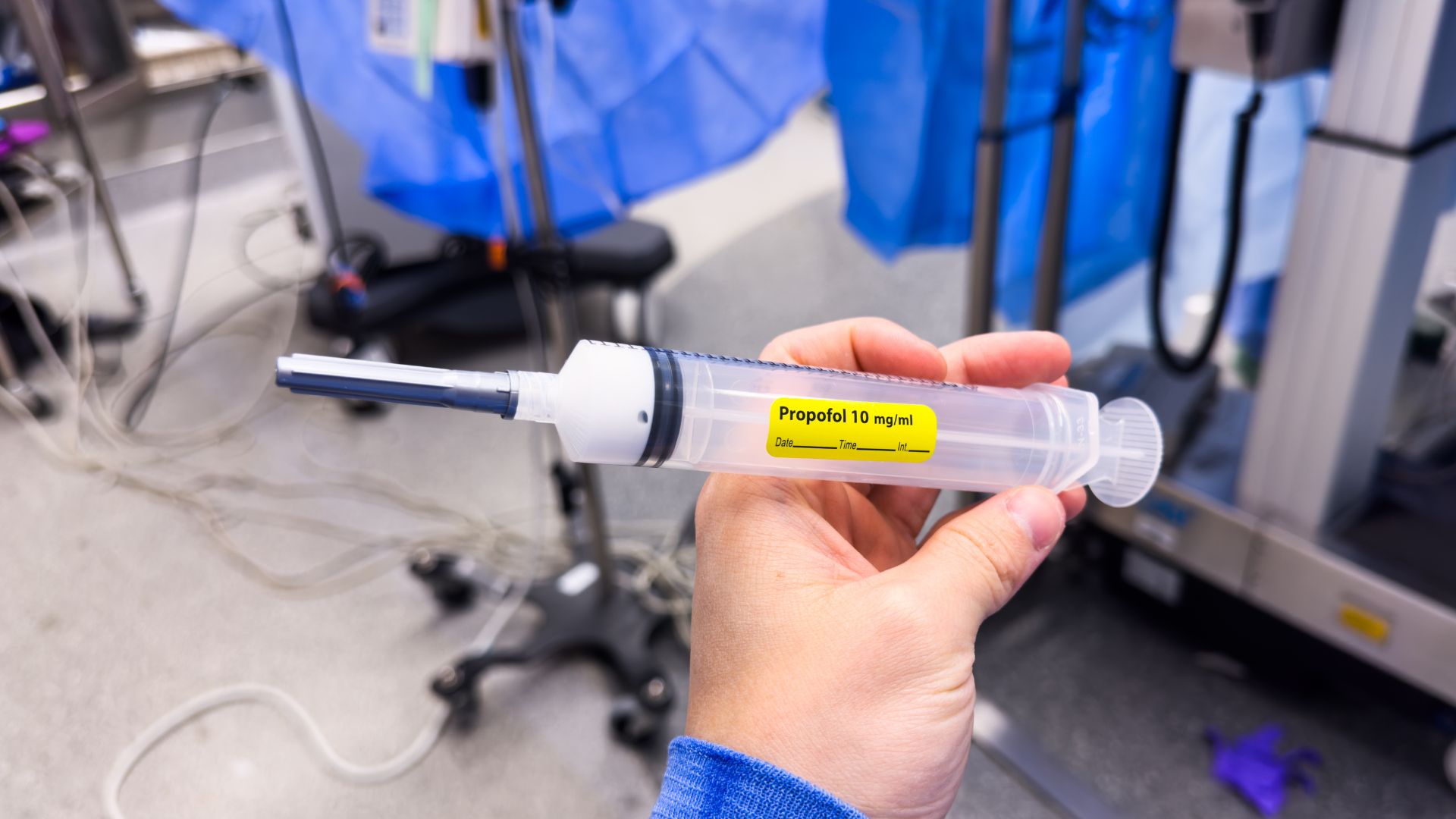How does anesthesia work?
Different types of anesthesia work in distinct ways — but scientists don't fully understand all their effects.

There's evidence of humans performing major surgeries since the Stone Age, as evidenced by ancient skulls with holes drilled in them, and the remains from a 31,000-year-old leg amputation in Borneo, for instance. However, the use of anesthesia didn't become widespread until the 1840s, when a dentist demonstrated that ether gas could be used to knock people out for surgery and ease their pain.
But how does anesthesia work, exactly?
Local anesthesia
Different types of anesthesia are used for different procedures, according to UCLA Health.
Sedation, or "monitored anesthesia care," can be used in minor surgeries — such as biopsies and some dental work — to make a patient relaxed and drowsy without causing them to lose consciousness. Local anesthesia, numbs only specific parts and keeps the patient awake.
Related: Do redheads really need more anesthesia?
Regional anesthesia, such as epidurals given during childbirth, blocks sensation to a whole area of the body. More-complex procedures, such as major surgeries, may call for general anesthesia, which numbs the whole body and causes the patient to lose consciousness.
Different anesthetics work in distinct ways. Local anesthetics, for example, work by preventing nerve cells from sending pain signals to the brain. More specifically, the drugs do so by stopping the flow of charged sodium molecules, or ions, through channels in the nerve cells. It's this flow of sodium ions that, when high enough, prompts a neuron to shoot a signal to its neighbors; together, the linked cells relay messages to the brain.
Get the world’s most fascinating discoveries delivered straight to your inbox.
The ion blocking happens in a stepwise sequence, with smaller, uninsulated nerve fibers being blocked before larger, insulated fibers. The effect of this is that sensations of pain get blocked before ones of pressure.
The concentration of local anesthetic needed to block nerves from sending messages, or firing, varies from nerve to nerve. Administering too much anesthesia can come with risks, though, as an overdose can lead to seizures, respiratory arrest and coma.
Mysteries of general anesthetics
General anesthetics are delivered either as a liquid injected into a vein or as a gas the patient breathes in. The option an anesthesiologist opts for depends on various factors, including whether they're treating an adult or child.
Young children, who aren't especially fond of IVs, can reach an anesthetized state fairly quickly using inhaled anesthetics, Dr. Ronald Harter, a professor of anesthesiology at The Ohio State University and president of the American Society of Anesthesiologists, told Live Science in an email. Gas takes longer to have a similar effect on adults due to their comparatively lower respiratory rates and cardiac outputs, meaning an adequate dose takes longer to reach its target.
Related: Can our brains help prove the universe is conscious?
Adults are often given anesthetic medications through an IV, at first. "Once the [adult] patient is unconscious, the intravenous anesthetic medications can be continued, or as is most often the case, an inhalational anesthetic is used to keep the patient anesthetized until the surgery or procedure is complete," Harter said.
Desired effects of general anesthesia include triggering immobility and unconsciousness; inducing amnesia about details of the procedure; and blocking pain and uncomfortable sensations. Each effect is probably caused by molecular mechanisms that differ somewhat between drugs — however, while general anesthetics are widely used, their precise mechanisms remain poorly understood.
"We're gaining in our understanding of the various actions on key receptors in the brain that produce anesthetic and sedative effects," Harter said. "But we still don't have a comprehensive understanding of precisely how it works."
One of the most widely used general anesthetics, propofol, is thought to work by boosting the activity of a chemical messenger called gamma-aminobutyric acid (GABA). GABA has an inhibitory effect on the neurons it plugs into, meaning it reduces their likelihood of firing. By enhancing GABA's effects in various brain regions, propofol causes unconsciousness; it can also be used for just sedation, at lower doses.
A fruit fly study found that chloroform and isoflurane knock the insects out by disrupting pockets of fat in the membranes of their brain cells. This releases proteins that set off a number of chain reactions inside the cells. One such protein suppresses the cells' electrical and chemical activity, potentially pushing the whole brain into an unconscious state. These drugs and similar anesthetics may work similarly in humans, but more research is needed.
Notably, just as scientists don't fully understand how general anesthetics put us to sleep, they don't know exactly how our neural circuits resume their normal function. In an effort to safely speed up the process, some researchers have started looking into ways in which stimulants, such as Ritalin, could be used to help restore consciousness faster.
This article is for informational purposes only and is not meant to offer medical advice.
Ever wonder why some people build muscle more easily than others or why freckles come out in the sun? Send us your questions about how the human body works to community@livescience.com with the subject line "Health Desk Q," and you may see your question answered on the website!

Christoph Schwaiger is a freelance journalist, mainly covering health, technology, and current affairs. His stories have been published by Live Science, New Scientist, BioSpace, and the Global Investigative Journalism Network, among other outlets. Christoph has appeared on LBC and Times Radio. Additionally, he previously served as a National President for Junior Chamber International (JCI), a global leadership organization, and graduated cum laude from the University of Groningen in the Netherlands with an MA in journalism.



